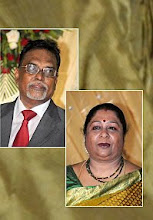Business basics
Did you know B.C. Roy sanctioned funds meant for the PWD so that Satyajit Ray could complete ‘Pather Panchali’? Read on…

Talking cinema Kalpana Lajmi at the discussion
The beginnings: Most of us have not associated ourselves with the art of expression through cinema thinking of investment and returns. When Dada Saheb Phalke made his first film in 1913, he would not have thought of how much and when he would recover what he invested. The emphasis on returns was not much even in the 1960s. Producers were content if they could cut even or with a profit margin of 15 per cent. Film-makers were then propelled by the freedom struggle, spirit to communicate and the translation of literature to celluloid.
Studio system: Back then, film-makers had to entice, convince and seduce people to invest. Many who were fascinated by the glamour of the industry would invest just to brush with the stars. Neither the film-maker nor the investor was sure if he would get the returns. Raj Kapoor and my uncle Guru Dutt were the first ones to organise the industry and set up studios modelled after the Hollywood kind of functioning. Waheeda Rehman, Rehman, Johnny Walker and a handful of technicians were working with Dutt for a monthly salary. Loyalty to the organisation ruled over star power.
Mr. Moneybags: When tradesman from Punjab and Sind moved to Mumbai in the 1960s to work in the construction industry, and invested their spoils in the film industry, quality began to take a backseat. It was never easy to find funds anyway. For instance, Satyajit Ray made Pather Panchali during the weekends after leaving his advertising job. He pawned his wife’s jewels but still fell short of funds. He approached the then chief minister of West Bengal, B.C. Roy, for help. Pather Panchali means ‘tunes of the road’. Roy consented to give the money and said he would tell his delegates that the film was meant for the betterment of the roads! The funds came from the Public Works Department!
Rights to ‘Sholay’: This is the only field where the creator may not have the rights over his work of art. G.P. Sippy, despite being the producer of Sholay, is not the owner of the negatives. He borrowed money from Tarachand Barjatya of Rajshri Films to make Sholay. Distributors did not want to buy a film that was considered too western and had a hero (Amitabh Bachchan) who looked like a horse! Sippy sold the film for a pittance. The film created history and made Rajshri Films richer for the next few generations.
Unorganised 1990s to now: If the 1980s saw film-makers like Shyam Benegal and Mahesh Bhatt tapping the audience, the 1990s saw the decline of quality cinema. No organised sector was willing to invest in cinema and the result showed in the quality. Cinema saw resurgence with the advent of satellite television. Starved for content, channels started buying films for a sum. This was the pre-Ekta Kapoor era. Today, money rides on satellite and digital rights. Yet, independent cinema finds it tough to survive.
(The Hindu, Metro Plus Chennai, 03:09:2007)
__________________________________
Labels: Cinema, Cinema/ Hindi


0 Comments:
Post a Comment
<< Home